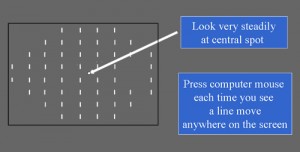This is the abstract for the poster that trainee ophthalmologist Nik Koutroumanos presented at the London, Kent, Surrey and Sussex Deanery Trainees conference last week. It describes what happened at the Birdshot Day and it caused quite a lot of interest there among the young doctors who will have gone away from the conference much more aware about our particular rare condition. There is great value in educating future ophthalmologists, who are not yet commited to a subspecialty area of uveitis and who will be carrying the knowledge of Birdshot to the corneal, vitreoretinal and paediatric eye clinics that they will inevitably become involved in. Thanks Nik for helping to spread the word.
Purpose: Birdshot Chorioretinopathy (BCR) is a rare, chronic, poorly understood, bilateral posterior uveitis, which results in loss of visual function. The disease and its treatment have dire effects on quality of life. The aims of the project were 5 fold: 1) To reduce the sense of isolation of patients with BCR, 2) to raise the profile of the disease 3) to allow a two-way exchange of information between patients and professionals, 4) to obtain a better visual outcome and 5) to provide a base for research.
Methods: A Birdshot Day was organized by founders of the Birdshot Uveitis Society along with a team of healthcare professionals, public-engagement and audio-visual specialists. What patients wanted was the focus of the team’s efforts. The event allowed for extensive networking and exchange of ideas, talks by specialists and patient representatives and ‘Question & Answer’ sessions which addressed patients’ concerns. Structured anonymised questionnaires and formal interactive evaluation techniques were used to fully evaluate the success and short and long term impact of the day on both patients and professionals.
Results: 50 Patients & 26 supporters joined 50 healthcare professionals for the Patient Day. Data analysis demonstrated a significant improvement in patient knowledge (P<0.001). Results showed that the priorities of patients and clinicians were not necessarily the same. Whilst drug side-effects were deemed the major problem in terms of patients’ quality of life (55.8%), BCR patients prioritised research into aetiology (47.8%) in preference to research into better medication (31.8%). There was evidence that patients greatly valued meeting fellow sufferers (P<0.001). Results strongly suggested that patients’ sense of isolation was significantly reduced and the number of ‘hits’ on the BUS website in the 3-weeks following more than doubled to 67,000. To date, 4 of our 5 aims have been achieved.
Conclusions: We believe that this level of patient engagement should be encouraged. The Birdshot Patient Day proved a success. It has led to better understanding between patients and professionals. Patients have successfully directed and engaged into future research into their condition and future Birdshot Patient days are planned.
After the conference , Nik told us that he found that many trainees at the conference were greatly interested in the concept of a patient day for a rare condition and he also thought that it was most valuable to be able talk to trainee ophthalmologists about the significance of involving patients in research.
We look forward to results.


